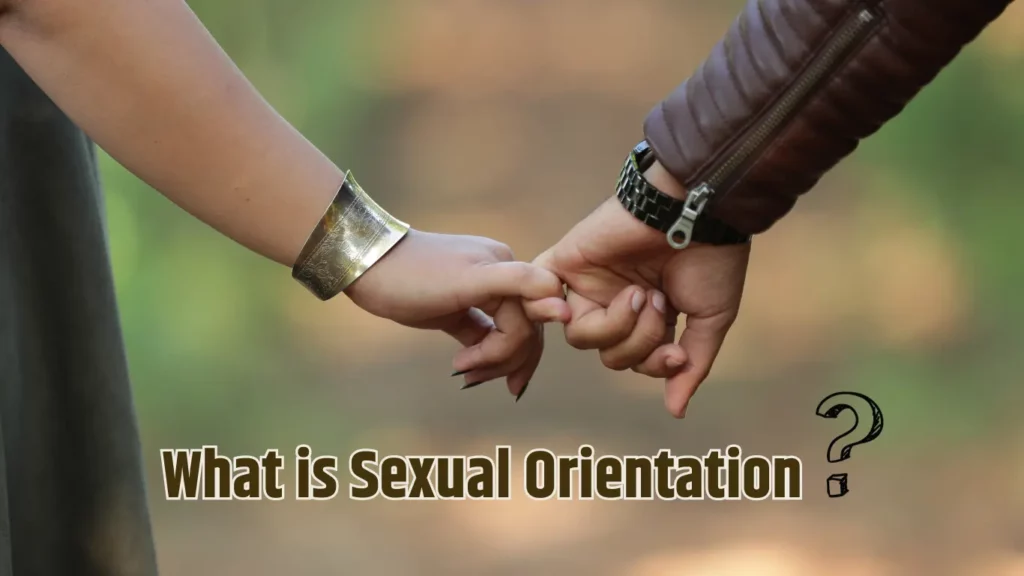What Is Sexual Orientation Mean: A Comprehensive Guide

Sexual orientation is a fundamental aspect of human identity, impacting how individuals experience love and attraction. It’s a topic that deserves understanding and respect. If you’ve ever asked, “What is sexual orientation mean?” you’re in the right place. This article will delve deep into the subject, providing clarity and dispelling myths. So, let’s begin our journey of exploration.
Understanding Sexual Orientation
Sexual orientation refers to a person’s emotional, romantic, and sexual attraction towards others. It’s a complex and deeply personal aspect of one’s identity, and it can be different for everyone.
Defining Sexual Orientation
At its core, sexual orientation defines who you are attracted to, whether it’s individuals of the opposite sex (heterosexual), the same sex (homosexual), both sexes (bisexual), or perhaps experiencing limited or no sexual attraction (asexual). However, the spectrum is much broader than these categories suggest.
The Fluid Nature of Sexual Orientation
It’s crucial to acknowledge that sexual orientation can be fluid and change over time. Some individuals may identify as one orientation initially and later discover that their attractions evolve.
Exploring Common Orientations
Now, let’s explore various sexual orientations that contribute to the beautiful tapestry of human diversity.
Heterosexuality
Heterosexuality, often referred to as straight, is when a person is primarily attracted to individuals of the opposite sex.
Homosexuality
Homosexuality is when an individual is attracted primarily to individuals of the same sex. This orientation is commonly referred to as gay (for men) or lesbian (for women).
Read Also: How to Avoid Quick Discharge of Sperm: A Comprehensive Guide
Bisexuality
Bisexuality encompasses attractions to both men and women. It’s important to remember that bisexuality isn’t limited to just these two genders; it can encompass attraction to individuals of any gender.
Pansexuality
Pansexuality goes beyond gender boundaries. Pansexual individuals can be attracted to people regardless of their gender identity.
Asexuality
Asexuality is a sexual orientation where individuals experience little to no sexual attraction. Asexual people may still have romantic attractions and form deep emotional connections.
Read Also: How to Control Sexual Urges When Single?
Gender Identity vs. Sexual Orientation
It’s important to differentiate between sexual orientation and gender identity. Gender identity relates to one’s internal sense of their own gender, while sexual orientation pertains to who one is attracted to. They are distinct aspects of identity.
Factors Influencing Sexual Orientation
While the origins of sexual orientation remain a topic of research and debate, it is clear that it is not a choice. Genetic, hormonal, and environmental factors play a role in shaping an individual’s sexual orientation.
Read Also: Sexual Stamina Kaise Badhaye: सेक्सुअल स्टैमिना कैसे बढ़ाएं
Conclusion
In conclusion, understanding “What is sexual orientation mean” is vital in fostering a more inclusive and compassionate society. It’s a topic that deserves careful consideration and respect, and this guide has provided you with insights into the diverse world of sexual orientations. Remember, the journey to self-discovery is unique for everyone, and it’s essential to embrace and celebrate our differences.
FAQs
No, sexual orientation is not a choice. It’s a fundamental aspect of a person’s identity and is not something that can be changed or “chosen.”
Yes, sexual orientation can be fluid and evolve over time. Some individuals may discover their attractions change or expand as they learn more about themselves.
Sexual orientation itself is not a health issue. However, discrimination, stigma, and social challenges can negatively impact the mental and physical health of individuals within the LGBTQ+ community.
Common myths include the idea that it’s a choice, that it can be “cured,” or that it’s solely based on one’s experiences. These myths are not supported by scientific evidence.
Listen, learn, and be respectful. Offer your support and understanding without judgment. Remember that acceptance and love go a long way.
